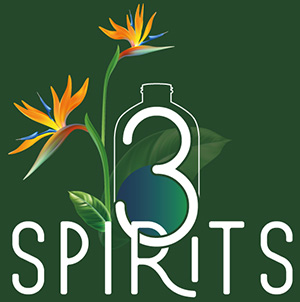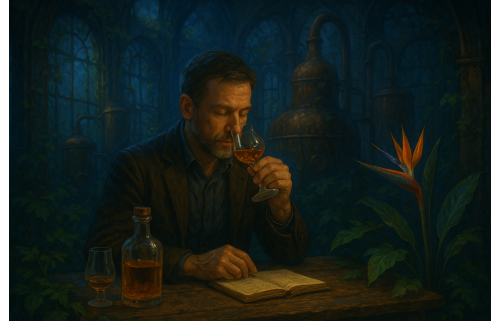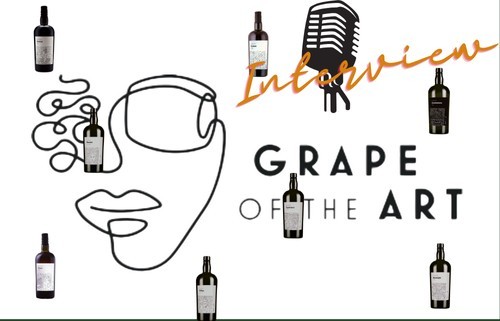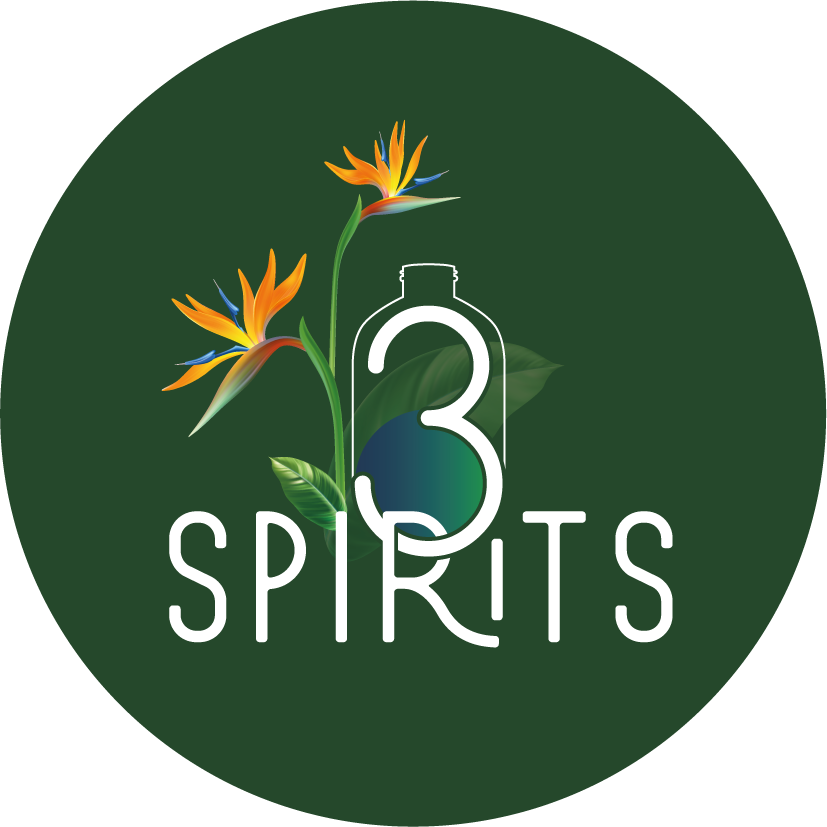Each sip bears the imprint of a terroir, time and expertise. To capture its full richness, you need to create the...
The Art of Tasting Spirits: A sensory and emotional journey
Tasting a spirit is more than just drinking. It's a ritual, an exploration, a dialogue between the glass and your senses. Behind every drop is a terroir, years of maturation and the expertise of a craftsman. Whether you're discovering a rum aged in the tropics, a whisky with a patina of age or a cognac steeped in history, every sip is a journey.
But how do you fully appreciate its richness? Here are the essential steps for transforming a tasting into a true sensory experience.
1. Create the right atmosphere
Even before you put the glass to your lips, the atmosphere around you plays a key role. A spirit is enjoyed with all the senses alert, and the environment in which you enjoy it can exalt or attenuate its subtleties.
🔹 Calm: Forget distractions, make way for concentration.
🔹 The ideal temperature: Not too hot, not too cold. A spirit reveals itself best between 18 and 22°C.
🔹 Lighting: Natural or white light to better appreciate its reflections.
The right equipment:
- The right glass: A tulip or Glencairn glass guides the aromas towards the nose.
- A carafe of still water: To adjust the intensity and cleanse the palate between tastings.
- A notebook: Keep a record of your impressions, because every spirit has a story to tell.
2. The first meeting
Before even approaching the glass, observe. This simple gesture reveals many secrets.
The colour: It suggests its origin and ageing.
- A luminous golden hue suggests a period in a bourbon cask.
- Deep amber suggests longer maturation or maturation in sherry casks.
- Glowing red? Perhaps ageing in port or red wine casks.
The spirit's tears:
Gently swirl the liquid in the glass. The “legs” that run down the sides indicate its texture and intensity.
Thick, slow tears? A rich, silky, structured spirit.
Thin, quick tears? A lighter, livelier profile.
Ø
3. Olfactory analysis
The sense of smell is the gateway to emotions, the first to immerse you in the world of spirits. Slowly bring your nose up to the glass, without rushing.
How do you smell a spirit?
- Inhale gently over the glass, without plunging your nose too deeply.
- Turn the glass slightly to release the hidden aromas.
- Return to the glass after a few moments. Some aromas only appear with time.
The main aromatic families:
- Fruity: The lively sparkle of citrus fruit, the roundness of sultanas, the delicacy of candied quince.
- Floral: A hint of lavender, a touch of dried rose, the delicacy of acacia honey.
- Spicy: The warmth of cinnamon, the liveliness of black pepper, the sweetness of vanilla.
- Woody: Caramelised oak, a hint of bitter cocoa, the depth of light tobacco.
- Smoky: The damp peat of a Scotch whisky, the distant echo of a wood fire.
Take your time. A spirit evolves. Each inspiration reveals a new facet.
4. Mouthful
The long-awaited moment. A first sip, left in the mouth for a few seconds, allows you to decipher its complexity.
The stages of a tasting in the mouth:
- The attack: The first impression. Lively, smooth, powerful?
- Development: The aromas that develop in the middle of the palate. A balance between sugar, acidity, bitterness and saltiness.
- Texture: Oily, velvety, airy?
- The finish: The aromatic persistence after swallowing or spitting it out. A great spirit leaves a lasting impression.
💡 Tip: Pass a little air between your lips to amplify the aromas (‘chewing’ technique). You might be surprised by new, unsuspected notes!
5. Retro-olfaction
After swallowing, exhale gently through your nose. This technique reveals discreet aromas hidden behind the strength of the alcohol.
A peated whisky may reveal a lingering saline touch, while a vintage cognac will leave a trace of candied fruit and rancio. These last moments are often the most revealing.
6. Compare, explore, experiment
Tasting is learning. Vary your experiences:
🔸 Compare several spirits of the same style to better grasp their nuances.
🔸 Note what strikes you most: balance, length, intensity.
🔸 Revisit a bottle after a few weeks: oxygenation can change its profile.
And why not try pairing food and spirits?
- An old rum will sublimate an intense dark chocolate.
- A peated whisky will find an echo in a hard cheese or smoked salmon.
- A vintage cognac goes perfectly with foie gras or a dried fruit dessert.
7. Conclusion: An art to be perfected
Tasting a spirit is much more than a simple pleasure. It's a plunge into history, a suspended moment where each sip tells the story of a terroir, a know-how, a passion.
The next time you pour yourself a glass, take your time. Observe, breathe, taste. Let yourself be surprised.
Posted in:
Tasting tips and Food & Spirits pairing








Leave a comment